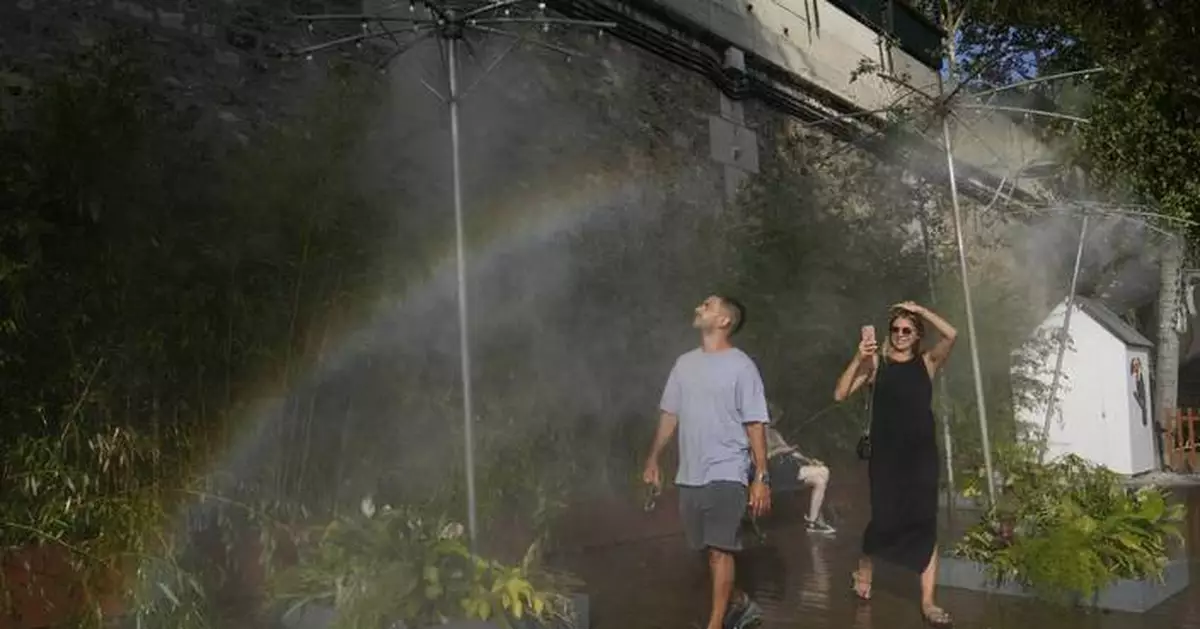Southwest France is grappling with an intense heatwave, with temperatures soaring to 43°C (109.4°F) in parts of Charente and Aude.
In Aude, a region renowned for its vineyards and Mediterranean landscapes, hundreds of firefighters are stationed on hillsides, vigilantly monitoring the periphery of a massive wildfire that consumed 16,000 hectares last week. While officials report that the flames are under control, they caution that full extinguishment may take several weeks, as smoldering hot spots persist.
The national weather authority, Meteo-France, has issued a red alert—the highest heat warning—for 12 departments, anticipating exceptional heat extending from the Atlantic coast to the Mediterranean plains. An additional 41 departments, including the neighboring microstate of Andorra, are under orange alerts.
Social media images depict deserted streets in Valence, residents shielding windows with foil to reflect the light, and tourists seeking shade along the Garonne in Toulouse. Café terraces across the south remain empty as people retreat indoors to escape the oppressive heat.
This marks only the eighth time since 2004 that a red alert has been issued, underscoring the severity of the current heatwave.
The designation allows local officials to cancel outdoor events, close public venues, and adjust school or summer camp schedules to mitigate health risks associated with prolonged exposure to extreme temperatures.
The heatwave, which began on Friday, is expected to persist throughout the week, extending into the August 15 holiday weekend. Forecasts indicate temperatures reaching 38°C (100.4°F) in the Centre-Val de Loire region and up to 34°C (93.2°F) in Paris.
In Aude, the wildfire has left a trail of devastation, destroying at least 36 homes and resulting in one fatality. Thirteen others, including 11 firefighters, have sustained injuries. The fire has severely impacted the region’s vineyards, with up to 80% affected.
The smoke from the blaze is expected to impair wine quality, raising concerns among local winemakers about the economic and cultural repercussions. Recovery efforts are anticipated to take years, highlighting the long-term challenges posed by such environmental disasters.
Authorities attribute the severity of the wildfire to climate change and prolonged drought conditions. The environment minister noted that the fire is the worst since 1949, emphasizing the escalating risks of severe wildfires in southern Europe. The situation is further complicated by the loss of vineyards, which traditionally acted as natural firebreaks.
Over the past year, nearly 5,000 hectares of vineyards have been uprooted in the region, primarily due to declining wine demand and government subsidies encouraging vine removal. This loss has exposed the land to increased fire risk, as intact vineyard areas helped slow the fire, while abandoned, overgrown land accelerated its spread.
As the heatwave continues, authorities and residents remain on high alert, with firefighting efforts intensifying to prevent further destruction.
The situation underscores the urgent need for comprehensive strategies to address the challenges posed by climate change, including the preservation of natural fire barriers and the implementation of effective wildfire management practices.












Leave a comment